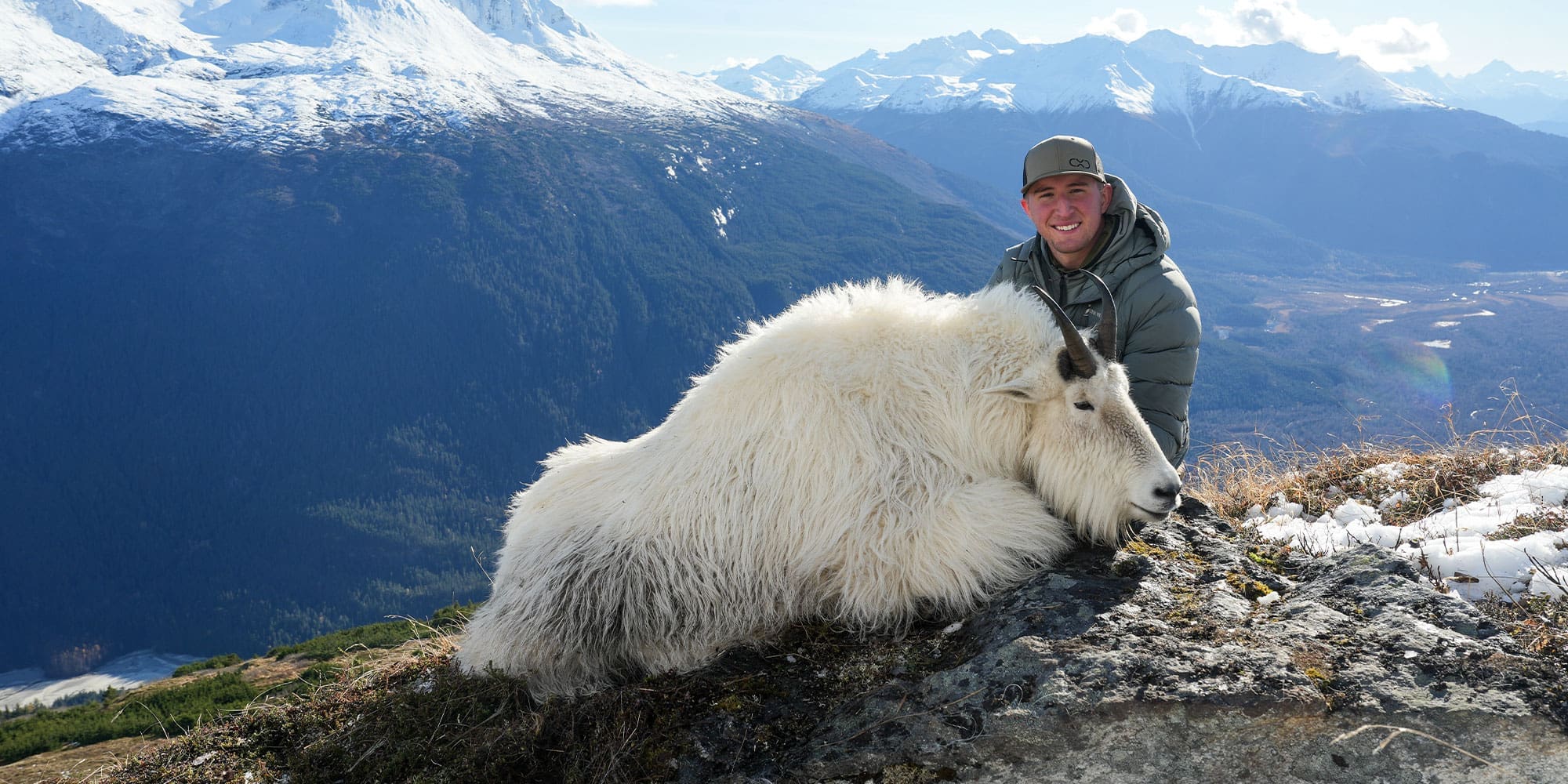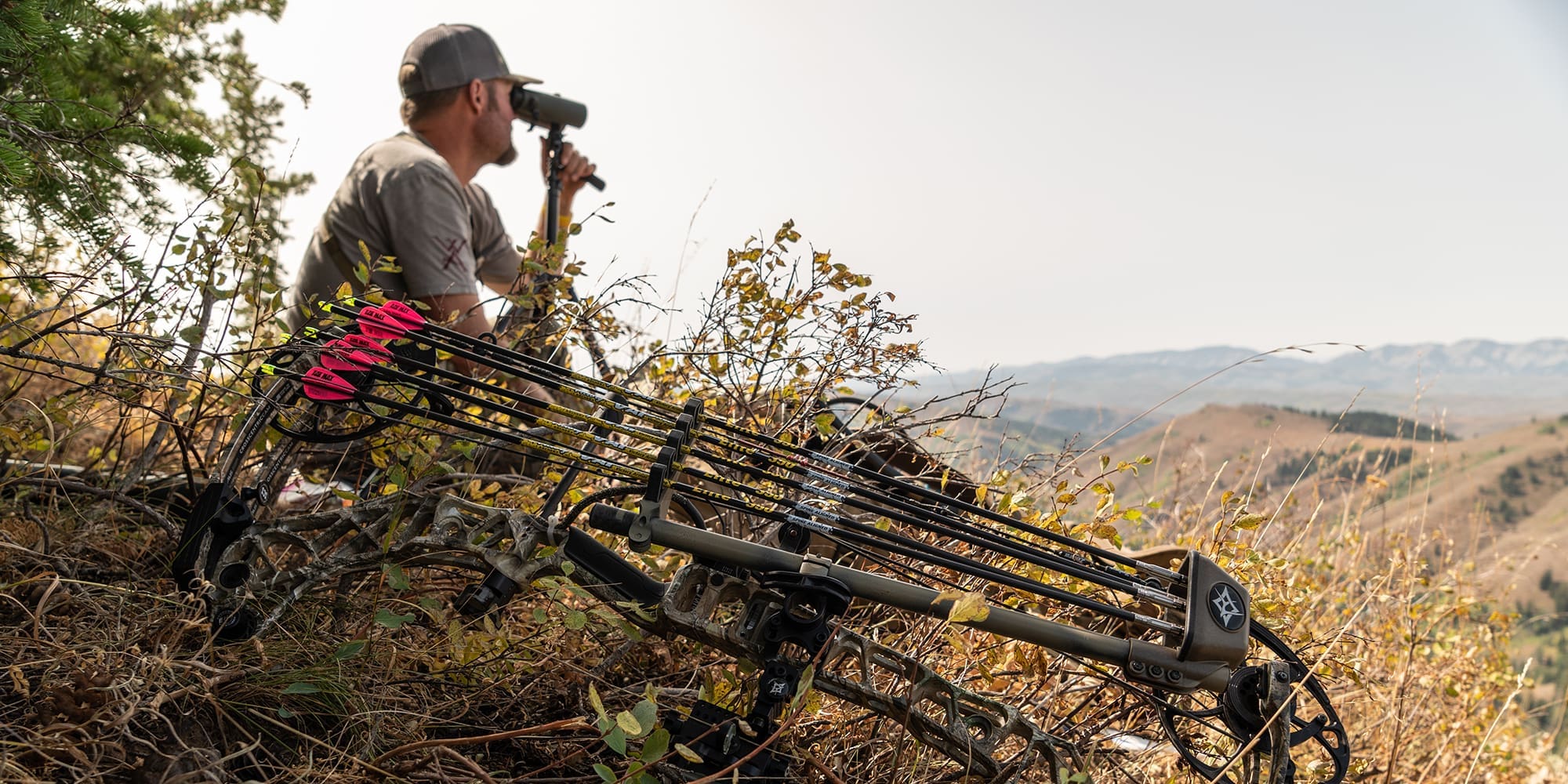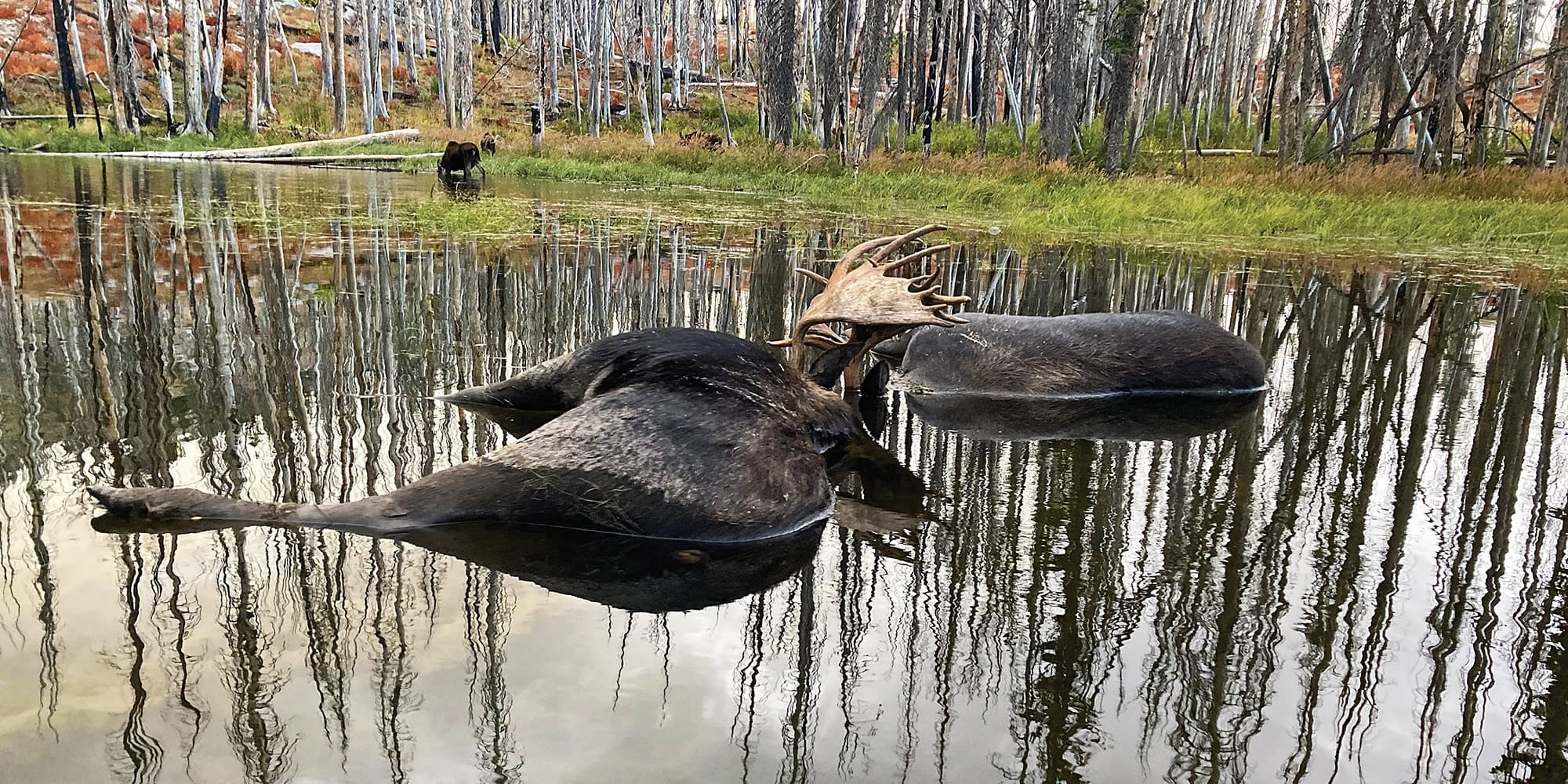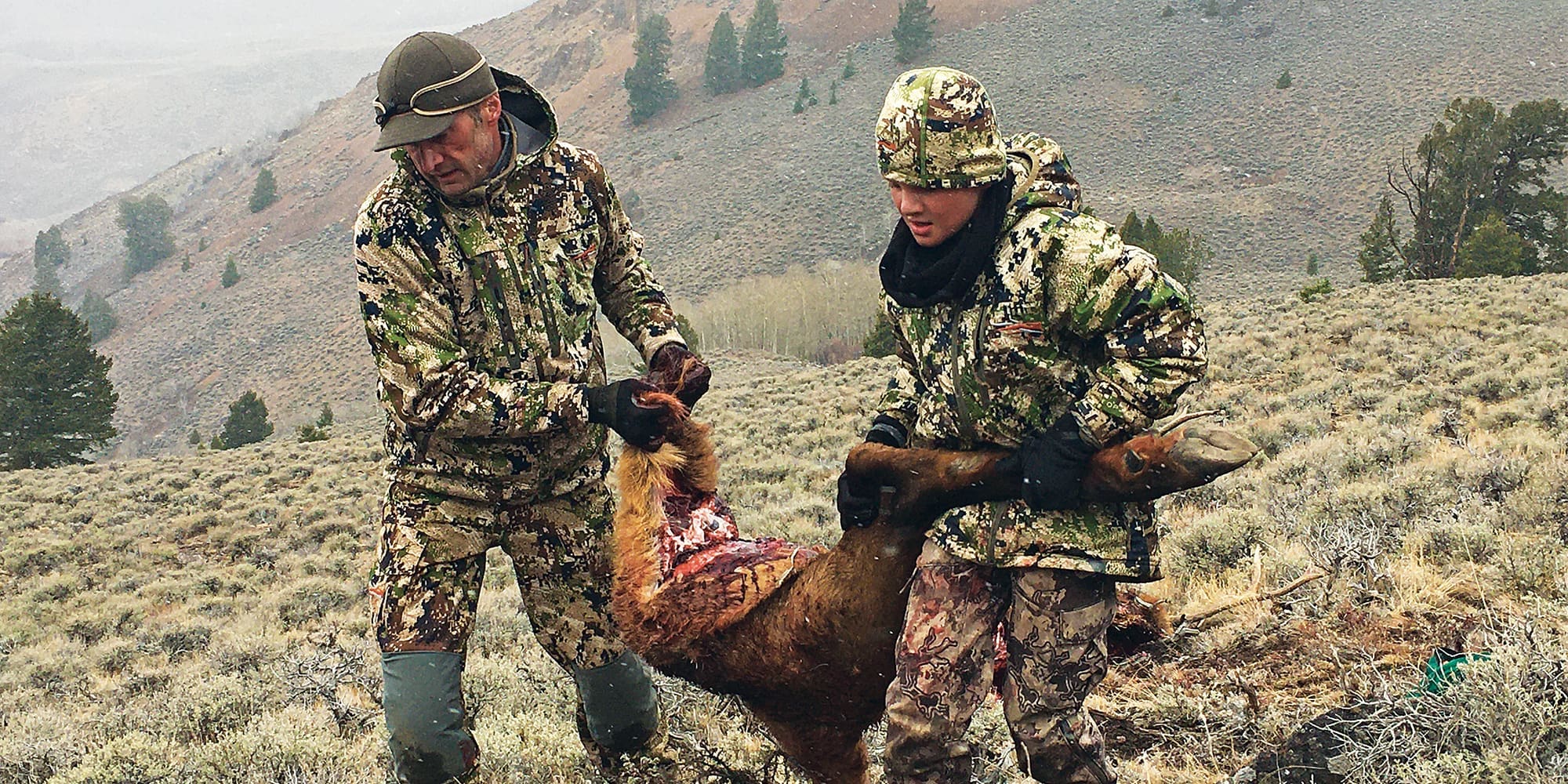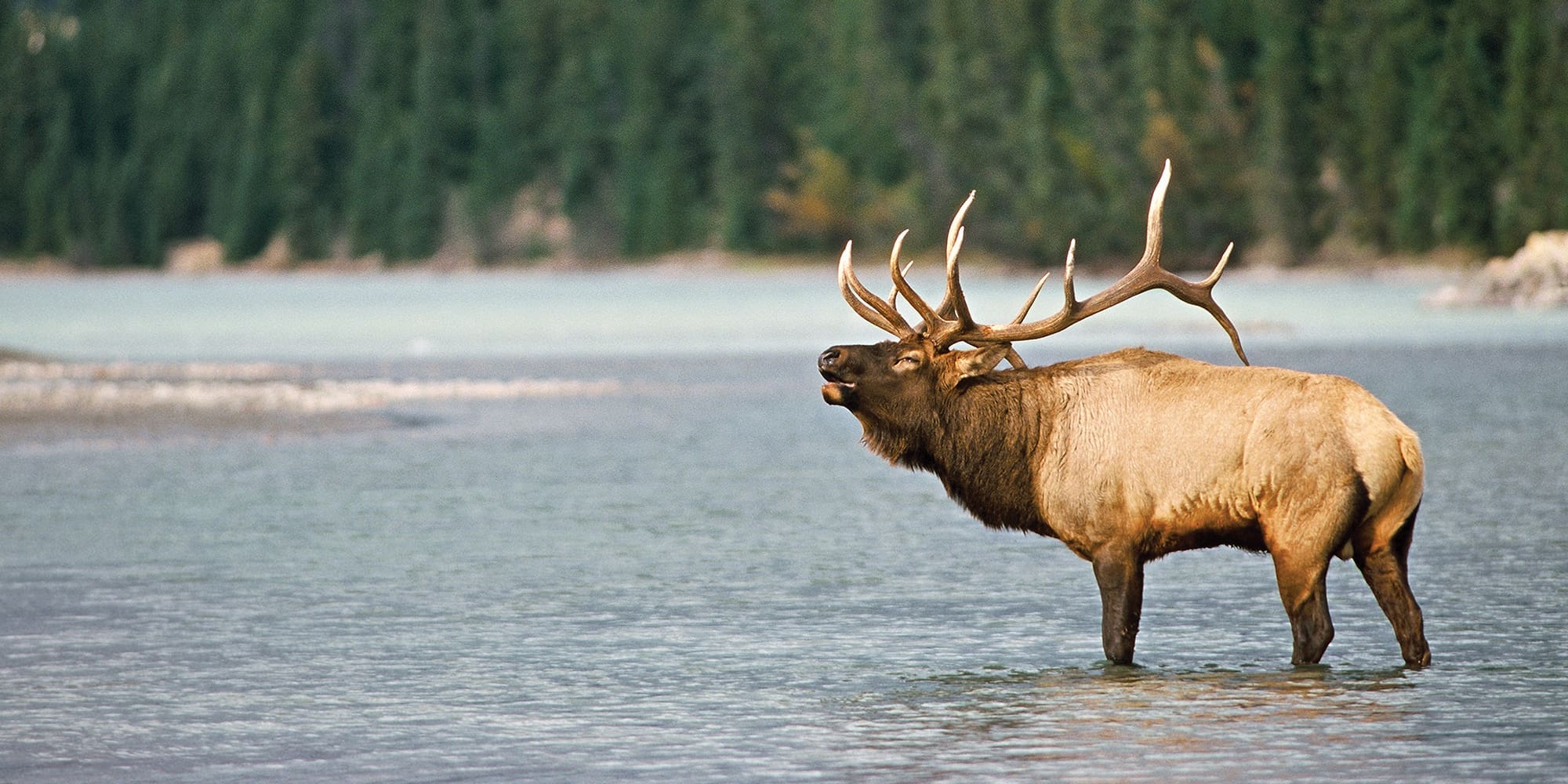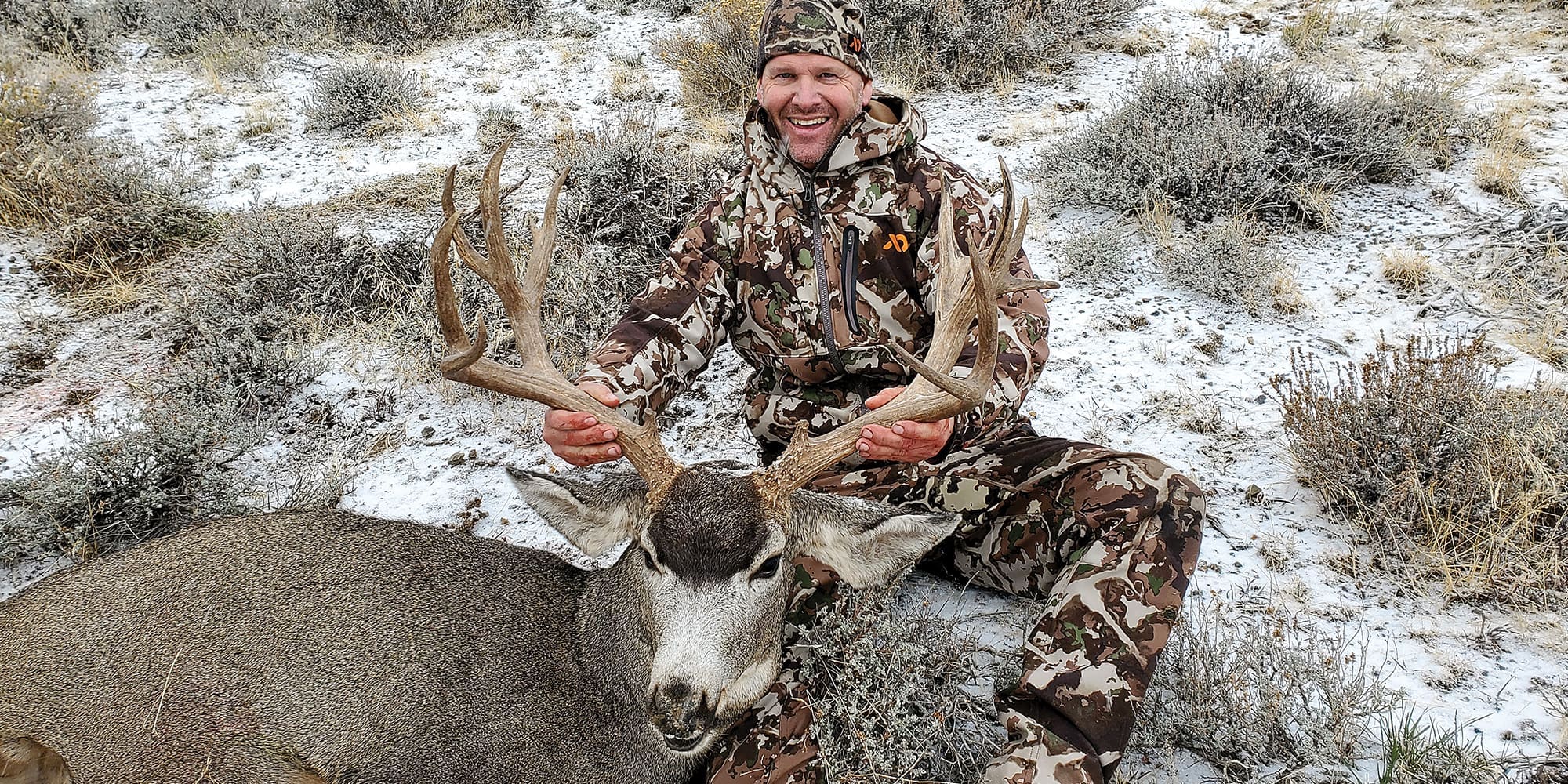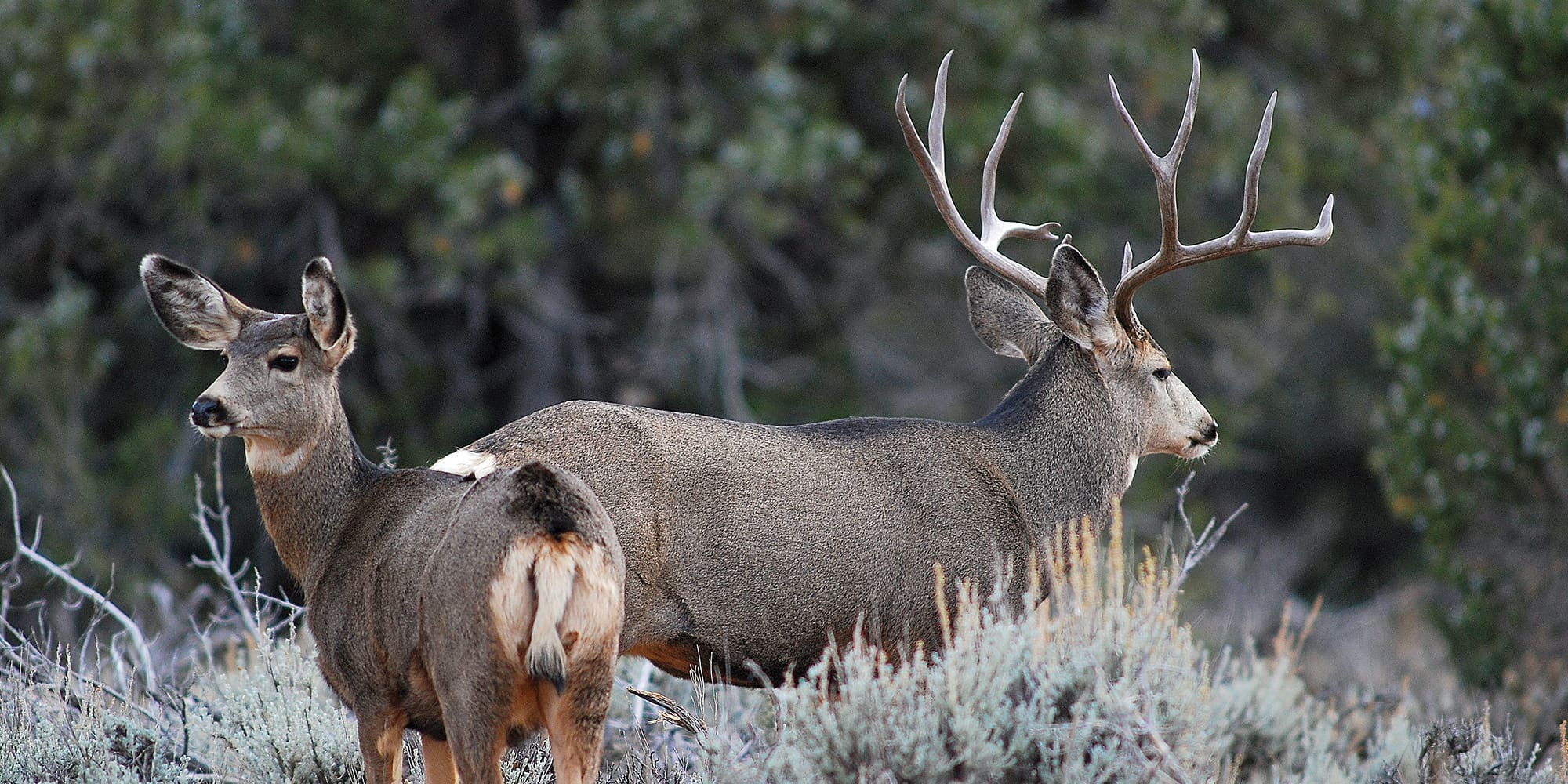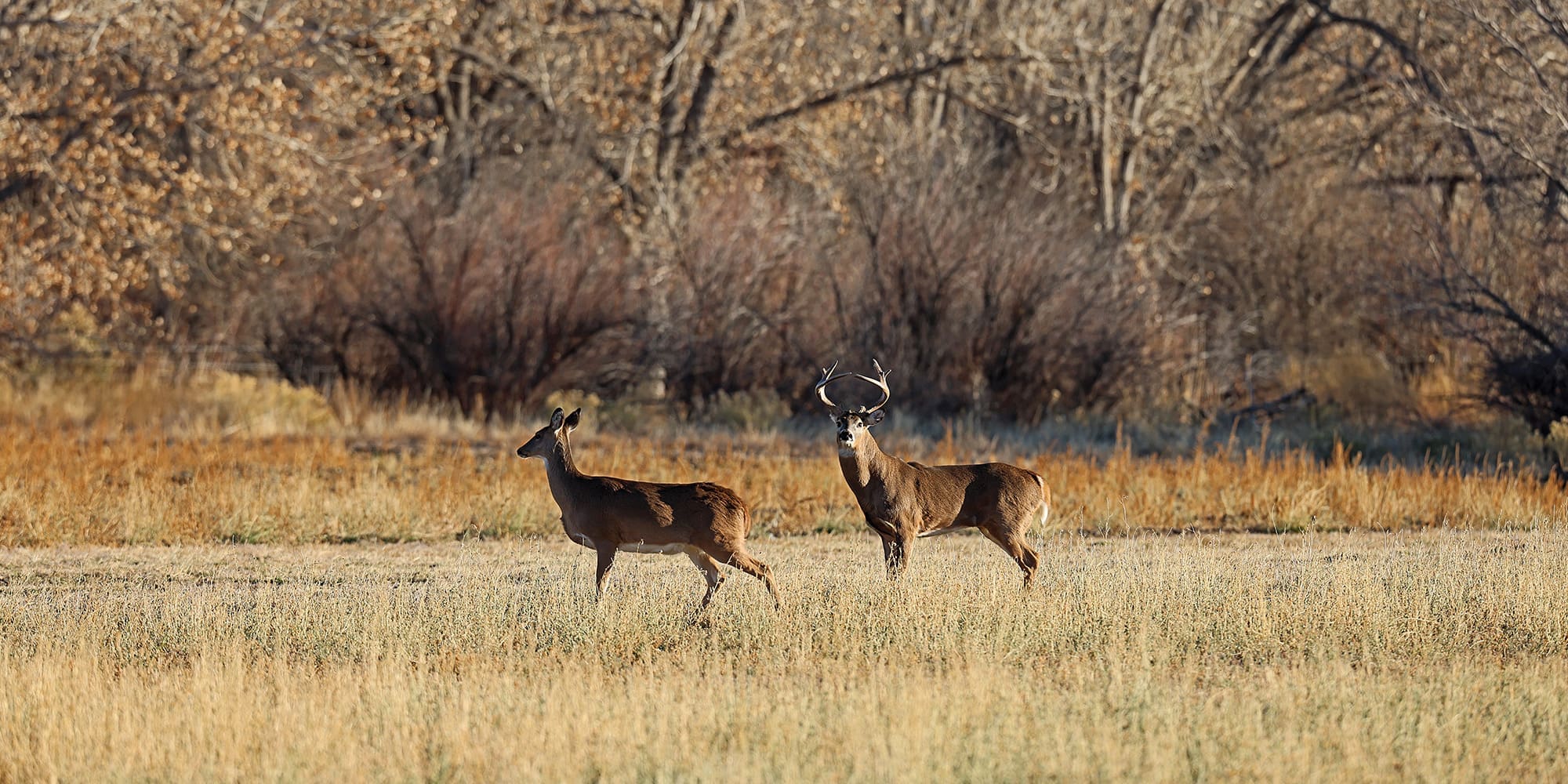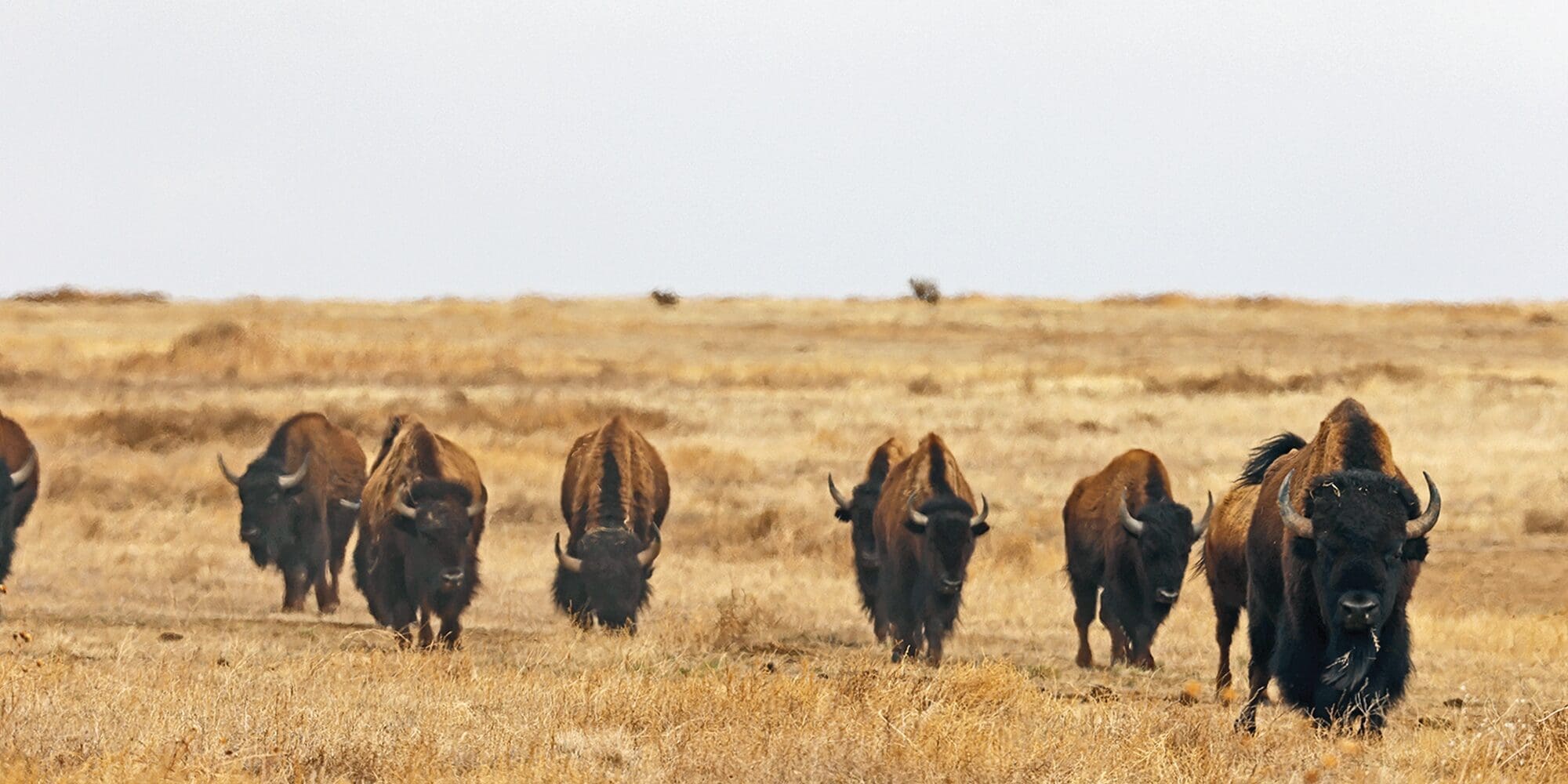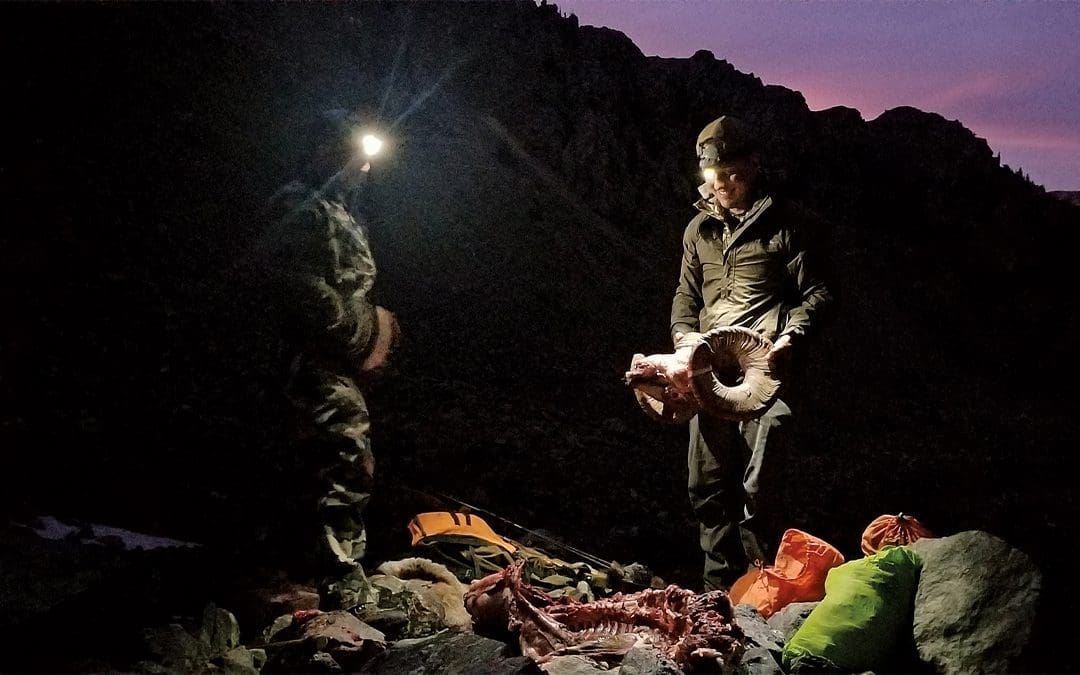
NOTICE: Certain links on this post may earn a commission for Western Hunter Magazine from Amazon or our other affiliate partners when you make a purchase. Thank you for your support.
Rocky Mountain Fortune
The Land of Enchantment
In 2016, I found myself looking for a partner to go on an adventure in the mountains of New Mexico. I’d just learned of the opportunity to hunt Barbary Sheep over-the-counter... the closest I believed I would ever come to the often fantasized “real” sheep hunt. After a brief pitch including, “steep mountains, new country, pain and struggle with low chance of success”, my newfound partner and I began our 12 hour drive and experienced what we would soon realize is one of the most underrated hunts in the country.
With my eyes opened to what New Mexico has to offer, 2019 found me living in the state and planning a Rocky Mountain Bighorn Sheep hunt. I was one of only four lucky hunters who drew a tag for the Wheeler Peak Wilderness, located in the Sangre de Cristo Mountains near Taos, NM. In an extraordinary stroke of luck, New Mexico granted me one of the hardest tags in the state to draw on my very first time applying in the state.
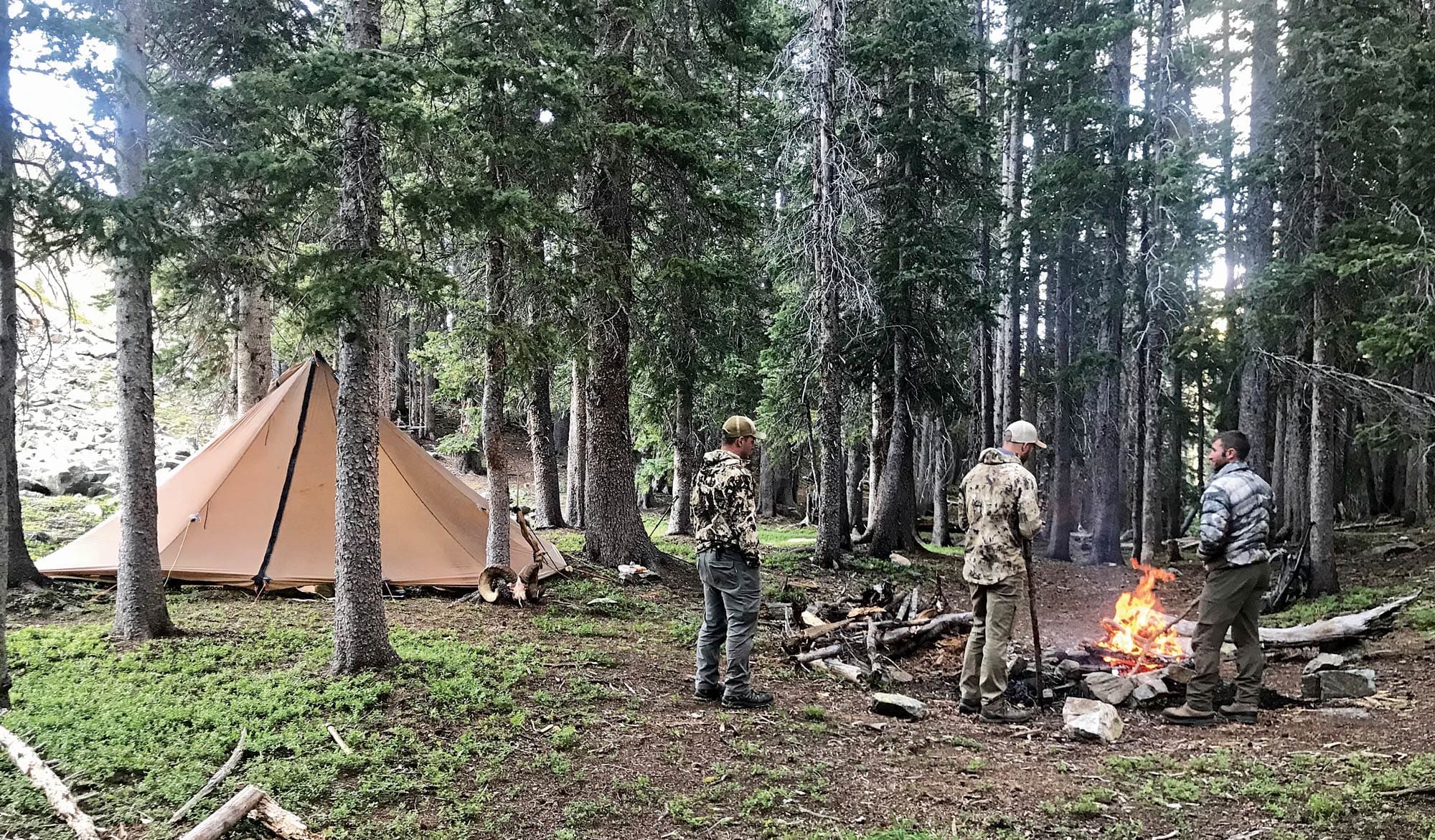
Scouting & Reconnaissance
I spent hours looking at Google Earth, hiking reports, and reading stories of sheep hunting. Without any trouble, I found a list of all the rams killed in my unit over the past five years with rough locations for each. I scoured the internet for pictures of rams with their corresponding scores in an attempt to establish a baseline for what a mature ram looks like. I spoke with a sheep biologist, a hunter who killed a ram in my area, a different hunter who had the same tag as me, and anyone I knew who had ever been to the area. Finally, a snow melt in August allowed me unimpeded access to the hunting area and I went on a scouting trip.
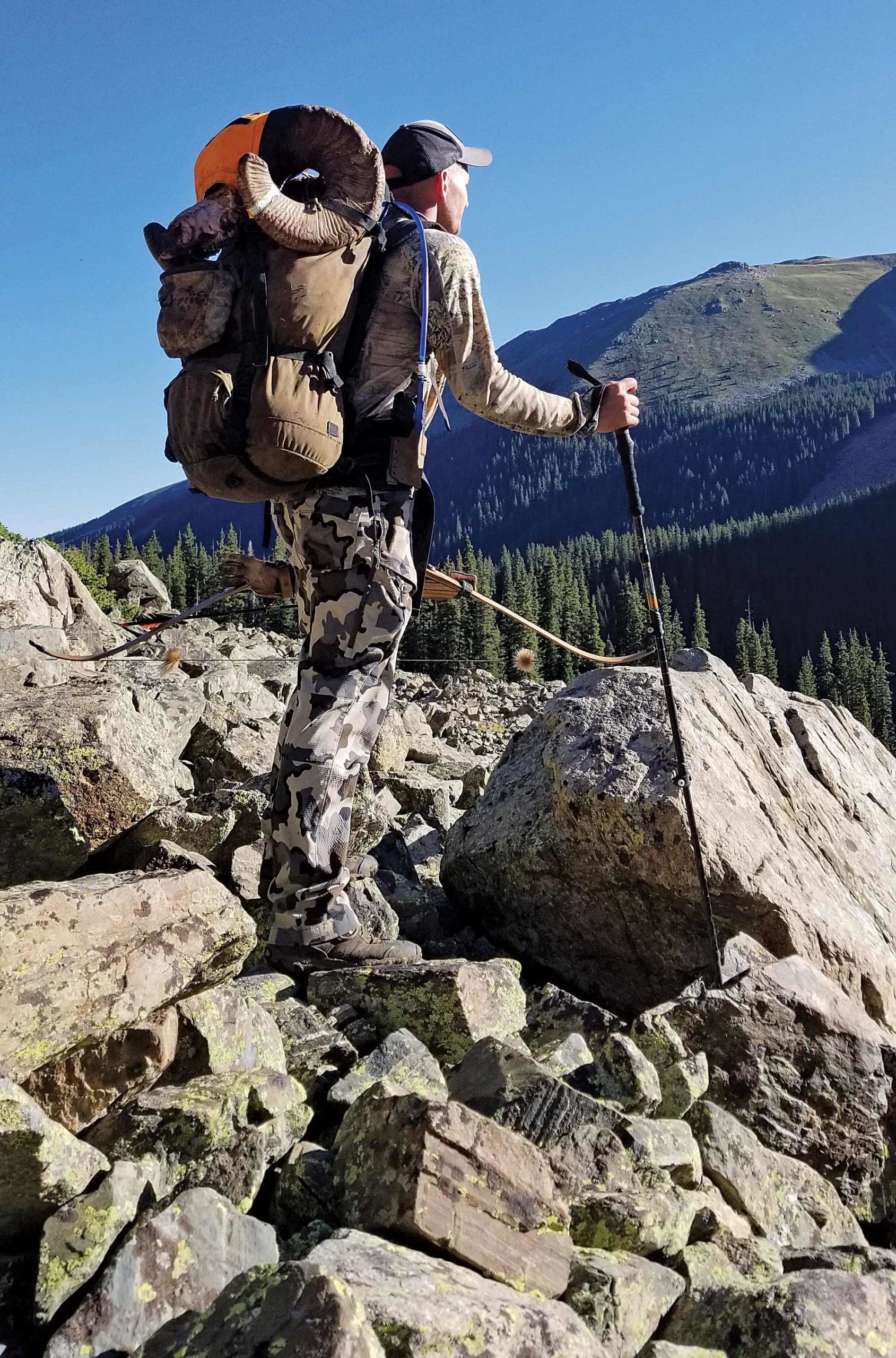
Identifying "The One"
We navigated our way through a boulder field as we climbed above the treeline not far from where I had seen sheep during my scouting trip. The first sheep we saw were a small group of rams trotting across a rockslide more than 1000 yds away and 800 ft above us. We all threw binos up quickly but couldn’t get a good idea of how big they were before they went out of sight in a cut behind some cliffs. We continued on, encouraged at the early sighting of rams.
At a snow drift the size of a football field, we sat down for a break and began to glass from the tripods. Within seconds we had located the same rams again, this time bedded barely inside rifle range. Eventually the biggest of the group gave us a good look and it was obvious he was what we were looking for. The big ram had a distinct gray face, blonde cape, and was beyond full curl with both sides being slightly broomed. This was THE ram.
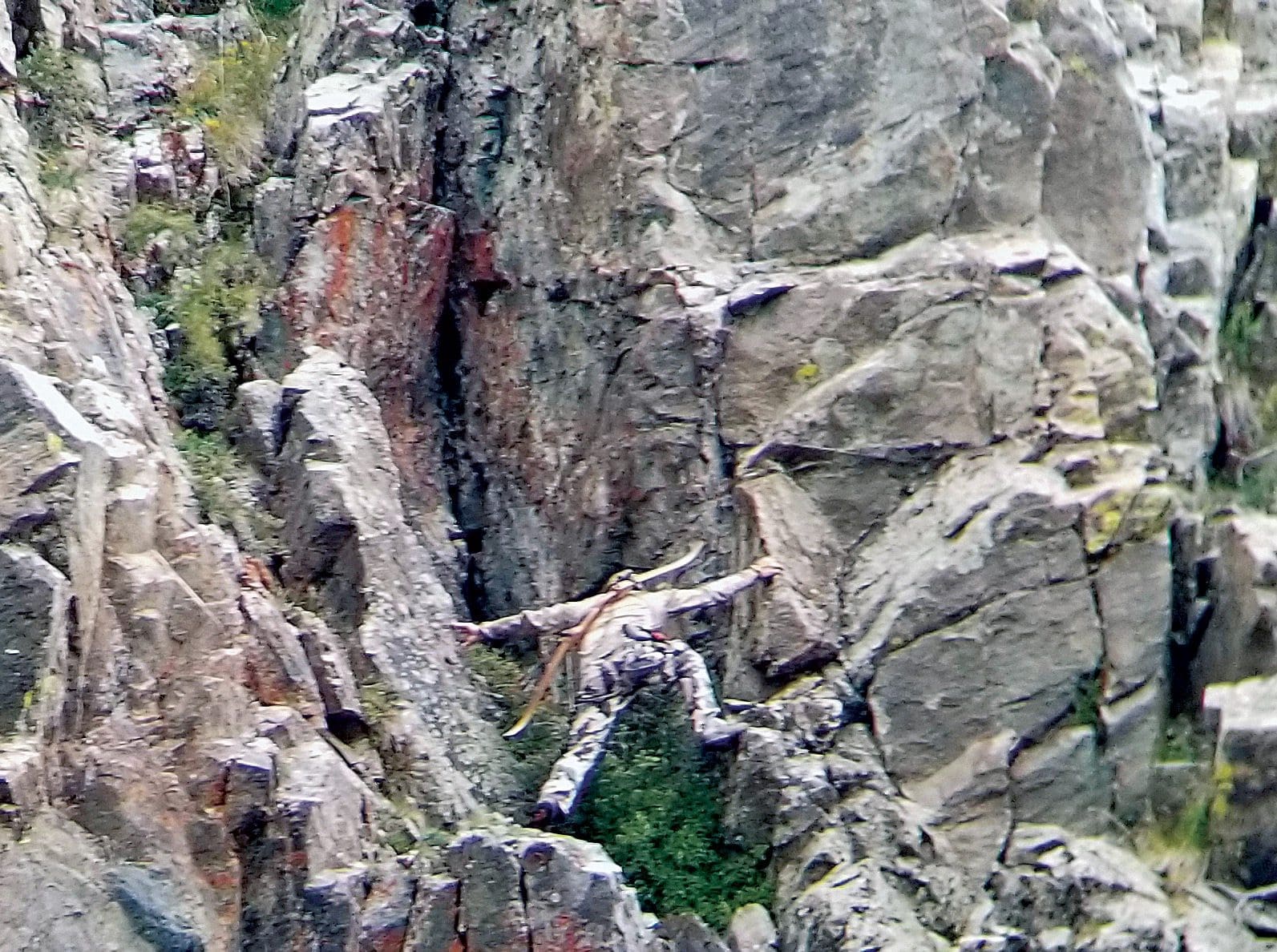
Mountaineer's Stalk
The group was bedded at what looked like 100 yards from the top with nothing but loose rock above them. I decided to make a move and pray I could get into traditional bow range. I used a small drainage in the cliffs to climb to the opposite side of the ridge and worked my way to be directly above the sheep. As I came over the top, I spotted all three rams still bedded and facing downhill. I worked my way down to a rock formation the size of a refrigerator but ran out of cover and decent footing. My rangefinder said 72 yards to the big ram – twice what I had hoped to shoot. Eventually my desperation to get closer pushed the sheep in a spectacular crashing of dislodged rocks as they ran to the other side of the basin. Regardless, the first day was already a huge success in my mind.
When I reached the crew, they were as excited and surprised as I was at how well things were going already. They had watched the rams all the way around the basin and were in clear view of them feeding in a narrow grassy avalanche chute. The chute had cliffs on both sides and looked to be no more than 30 yards wide. We quickly came up with a plan for how I could best make another stalk.
The country had everything I hoped it would. I found sheep from the timber in the very bottom all the way to the boulders along the skyline. At least four rams showed promise and I burned my phone battery taking pictures of them from every angle possible. I took note of the folds and crevices in each sub-drainage as well as the green grass which offered quiet footing. This hunt had started to look ideal for a bow, a decision that tormented me for the next several weeks while I waited at home for the season to open.
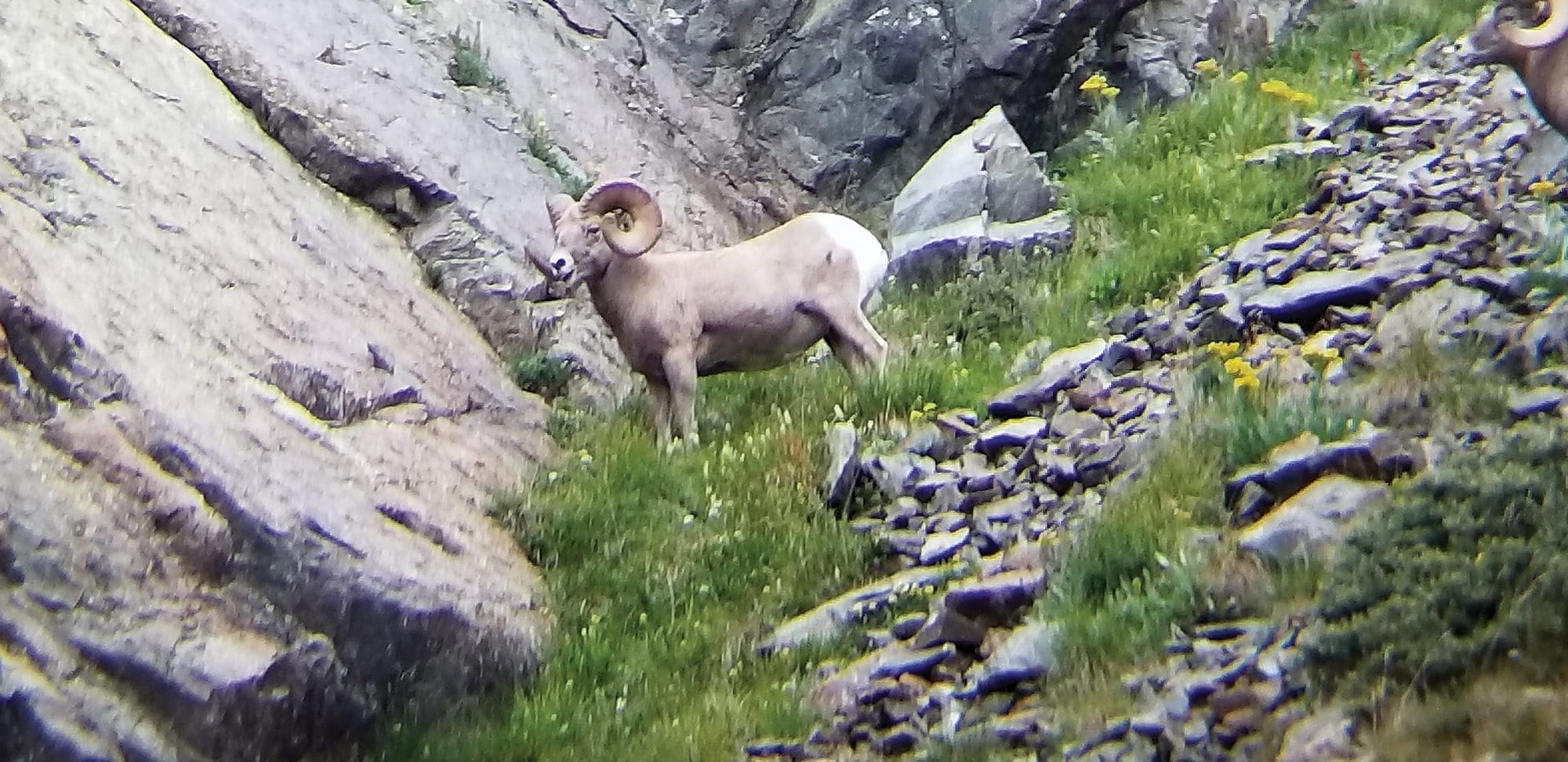
The big ram had a distinct gray face, blonde cape, and was beyond full curl with both sides being slightly broomed. This was THE ram.
A Handmade Weapon
September 1st was a cool, crisp morning in Taos, NM and I was joined at the trailhead by three friends, including the one who had accompanied me on my very first NM hunt; all three had driven more than 10 hours to join me. We set out with packs ready for eight days of hunting.
Having built my first crude estimation of a real bow before I could drive, it was only natural that I hand-carried a three-piece recurve I built myself as my primary and strapped a compound on my pack as a backup. My dad had always supported my passion with essentially every tool he owned. By the time I was in college, I was hunting with almost nothing but my own hand-built bow. On this hunt, I had a bow with red elm limbs and a zebrawood riser which pulled 58# at 28”. Hundreds of arrows over the summer had my confidence at an all-time high.
At this point, I had made the hike in and a fairly serious climb on the first stalk, but even with fatigue on my mind, it was impossible for me to pass up such an ideal chance to stalk a big ram. Once again, I started the climb from our glassing spot with my bow in hand. The cliffs on the right side of the rams were very irregular, made of sheer rock and car-sized boulders which formed multiple shelves and chutes. I reached a point level with the rams and began to traverse the cliffs across, maintaining elevation as best I could.
As I began creeping toward the chute containing the rams, I looked at the guys through my binos and received a signal of “five” and “zero” to indicate I was now 50 yards from the ram. Combat breathing steadied my hands as I crept closer and peeked over a basketball sized rock down into the chute. There was my ram at 27 yards. I ducked back down and positioned myself close enough to shoot over the rock when I stood, a lesson learned the hard way on a mule deer hunt in Colorado.
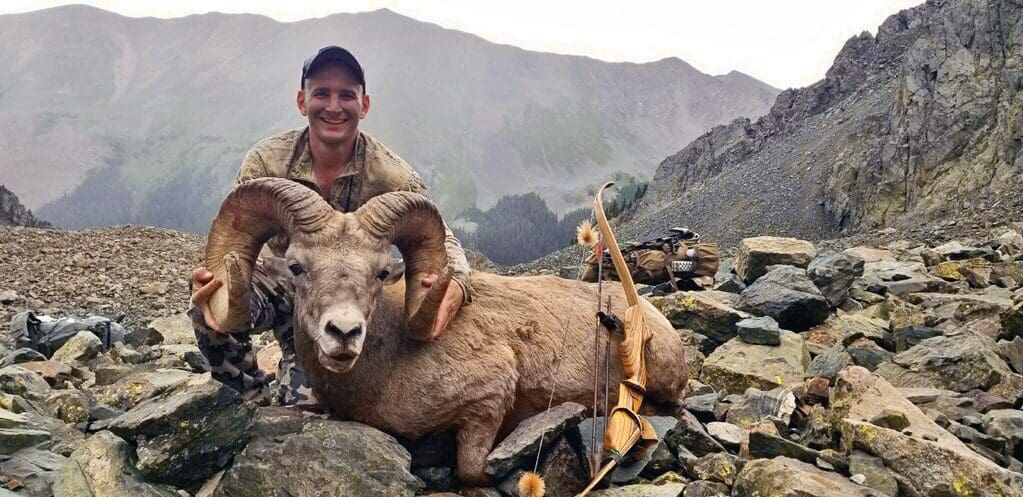
Calm And Decisive
As I rose up and put pressure on the string, I could see the ram facing me; his chest looked as wide as a bull. I went through my shot mantra and focused on where I wanted to hit. The arrow hit well and exited near his sternum. He whirled and ran but paused before jumping off a small ledge. As he paused, I hit him with a second arrow at 42 yds. Although I could see blood pouring out of his chest, my immediate feeling was fear as I watched an animal every hunter dreams of, running downhill with my arrow in him. My fear was relieved as the ram crashed within seconds.
Walking up to a dead ram is hard to explain. I can only remember briefly thinking to myself, “What have you done?” These are incredible animals. It took all of us to move him a few yards for some photos. We completed processing and caping in a rainstorm which seemed fitting for the occasion.
He green scored 181 1/8” at 10 years old. We made camp on the snow drift since the closest flat spot was a considerable elevation change away. With nowhere to be and the meat buried in the snow, we made the decision to stay a few days and enjoy the big views. As I sat on a snow drift next to my ram, it was impossible not to see how fortunate I had been to get such an opportunity. For nothing more than a lifetime supply of luck and the cost of resident hunting license, I had been given what many hunters dream of...a DIY, public land, ram with a bow.


